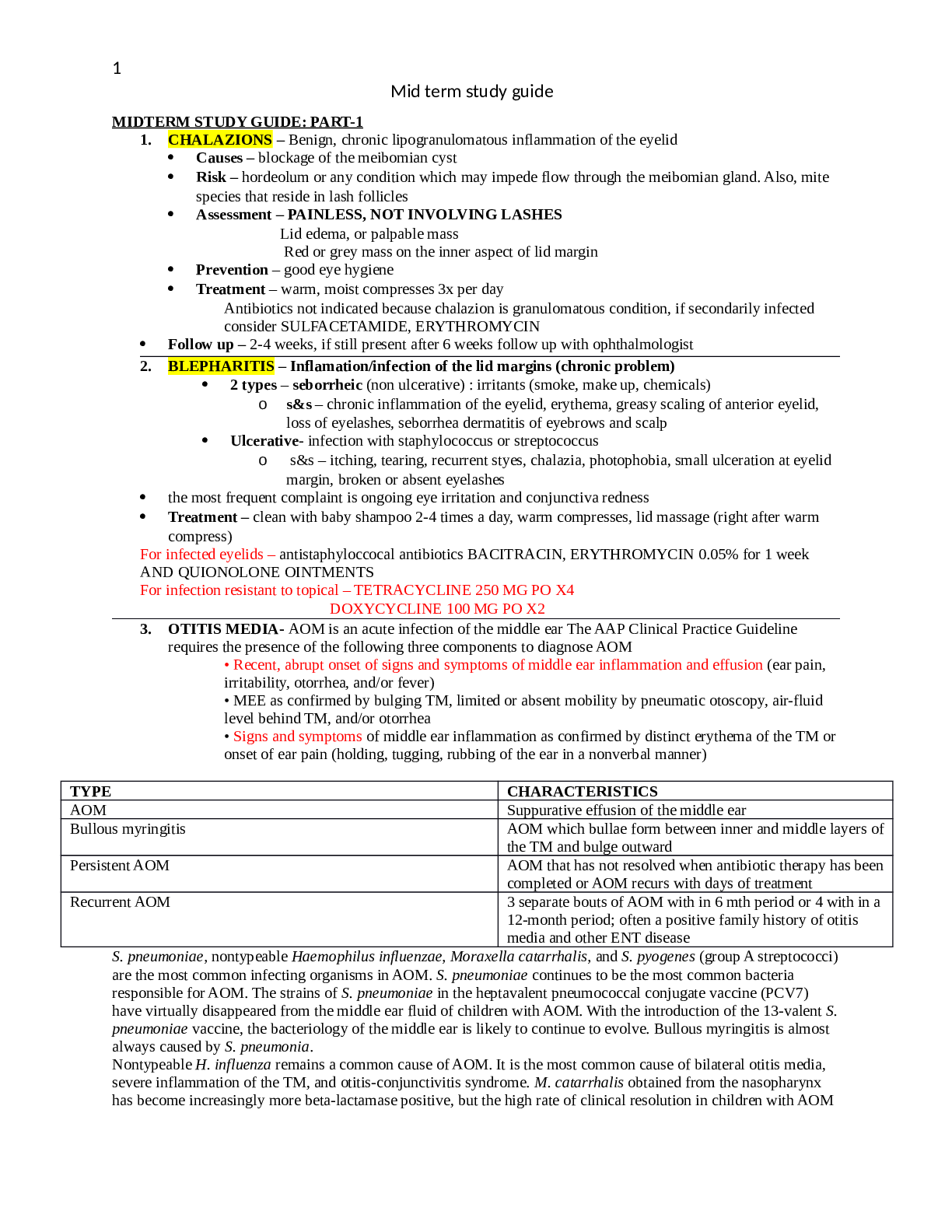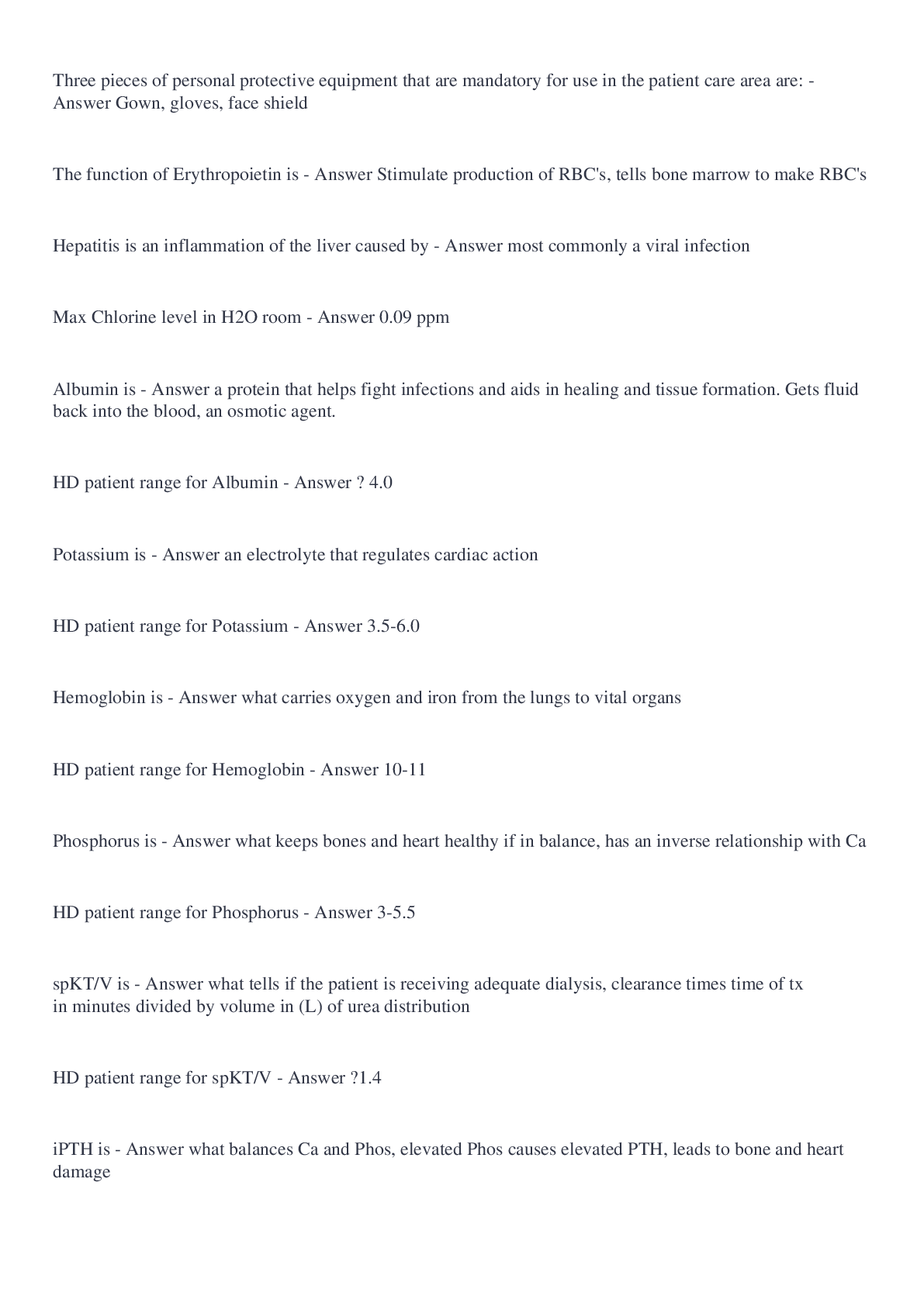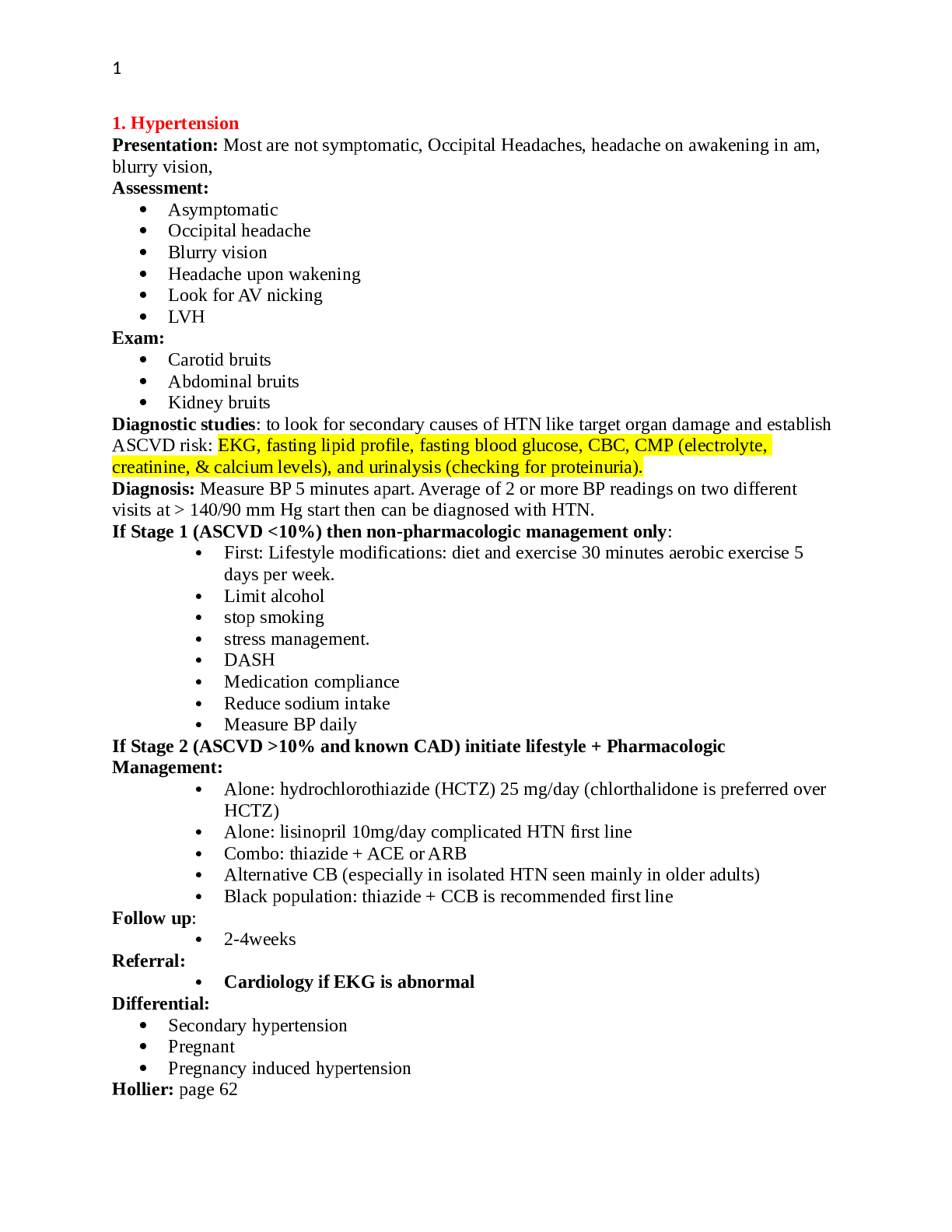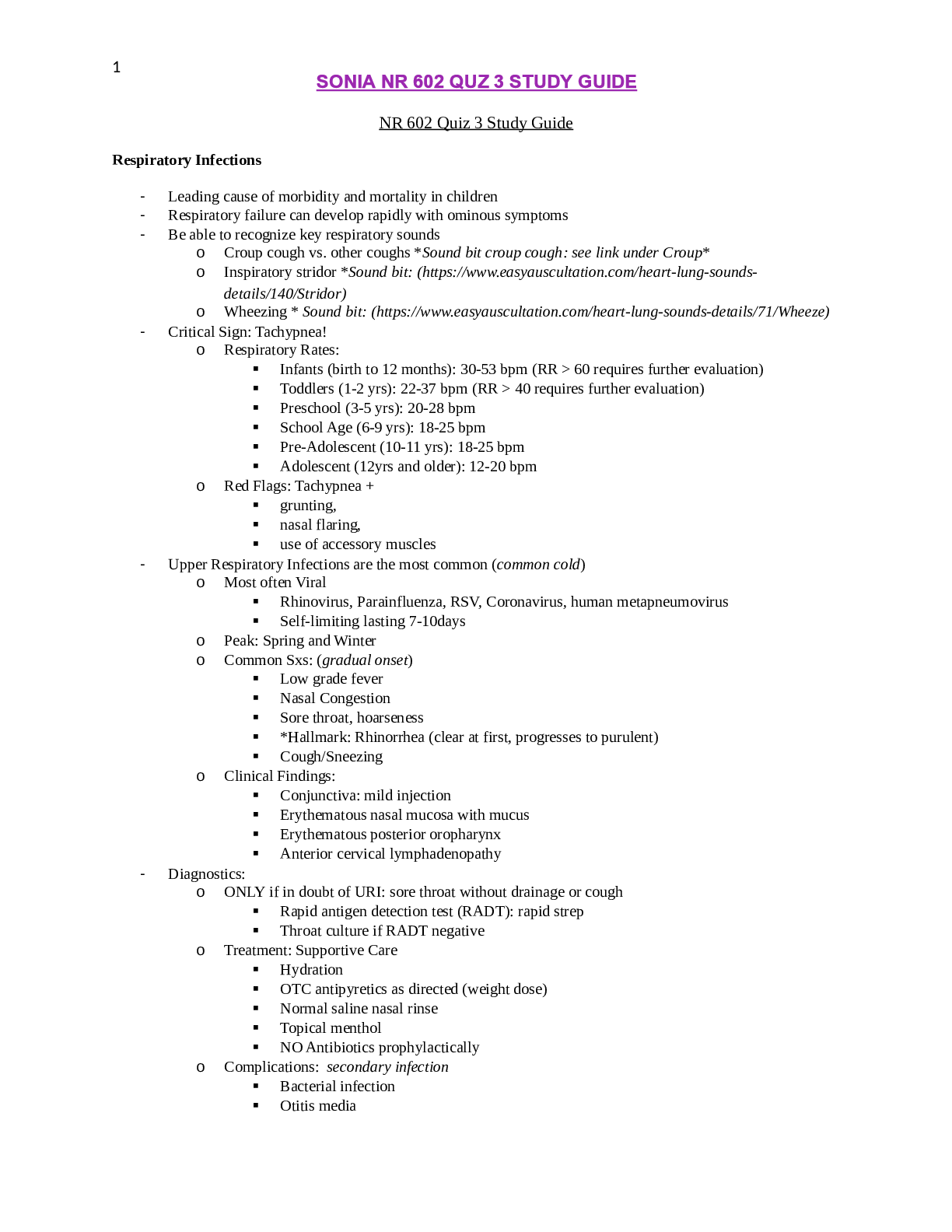*NURSING > STUDY GUIDE > Chamberlain College of NursingNR 602 NRMIDTERM study guide (All)
Chamberlain College of NursingNR 602 NRMIDTERM study guide
Document Content and Description Below
Mid term study guide MIDTERM STUDY GUIDE: PART-1 1. CHALAZIONS – Benign, chronic lipogranulomatous inflammation of the eyelid Causes – blockage of the meibomian cyst Risk – hordeolum... or any condition which may impede flow through the meibomian gland. Also, mite species that reside in lash follicles Assessment – PAINLESS, NOT INVOLVING LASHES Lid edema, or palpable mass Red or grey mass on the inner aspect of lid margin Prevention – good eye hygiene Treatment – warm, moist compresses 3x per day Antibiotics not indicated because chalazion is granulomatous condition, if secondarily infected consider SULFACETAMIDE, ERYTHROMYCIN Follow up – 2-4 weeks, if still present after 6 weeks follow up with ophthalmologist 2. BLEPHARITIS – Inflamation/infection of the lid margins (chronic problem) 2 types – seborrheic (non ulcerative) : irritants (smoke, make up, chemicals) o s&s – chronic inflammation of the eyelid, erythema, greasy scaling of anterior eyelid, loss of eyelashes, seborrhea dermatitis of eyebrows and scalp Ulcerative- infection with staphylococcus or streptococcus o s&s – itching, tearing, recurrent styes, chalazia, photophobia, small ulceration at eyelid margin, broken or absent eyelashes the most frequent complaint is ongoing eye irritation and conjunctiva redness Treatment – clean with baby shampoo 2-4 times a day, warm compresses, lid massage (right after warm compress) For infected eyelids – antistaphyloccocal antibiotics BACITRACIN, ERYTHROMYCIN 0.05% for 1 week AND QUIONOLONE OINTMENTS For infection resistant to topical – TETRACYCLINE 250 MG PO X4 DOXYCYCLINE 100 MG PO X2 3. OTITIS MEDIA- AOM is an acute infection of the middle ear The AAP Clinical Practice Guideline requires the presence of the following three components to diagnose AOM • Recent, abrupt onset of signs and symptoms of middle ear inflammation and effusion (ear pain, irritability, otorrhea, and/or fever) • MEE as confirmed by bulging TM, limited or absent mobility by pneumatic otoscopy, air-fluid level behind TM, and/or otorrhea • Signs and symptoms of middle ear inflammation as confirmed by distinct erythema of the TM or onset of ear pain (holding, tugging, rubbing of the ear in a nonverbal manner) TYPE CHARACTERISTICS AOM Suppurative effusion of the middle ear Bullous myringitis AOM which bullae form between inner and middle layers of the TM and bulge outward Persistent AOM AOM that has not resolved when antibiotic therapy has been completed or AOM recurs with days of treatment Recurrent AOM 3 separate bouts of AOM with in 6 mth period or 4 with in a 12-month period; often a positive family history of otitis media and other ENT disease S. pneumoniae, nontypeable Haemophilus influenzae, Moraxella catarrhalis, and S. pyogenes (group A streptococci) are the most common infecting organisms in AOM. S. pneumoniae continues to be the most common bacteria responsible for AOM. The strains of S. pneumoniae in the heptavalent pneumococcal conjugate vaccine (PCV7) have virtually disappeared from the middle ear fluid of children with AOM. With the introduction of the 13-valent S. pneumoniae vaccine, the bacteriology of the middle ear is likely to continue to evolve. Bullous myringitis is almost always caused by S. pneumonia. Nontypeable H. influenza remains a common cause of AOM. It is the most common cause of bilateral otitis media, severe inflammation of the TM, and otitis-conjunctivitis syndrome. M. catarrhalis obtained from the nasopharynx has become increasingly more beta-lactamase positive, but the high rate of clinical resolution in children with AOM 2 Mid term study guide from M. catarrhalis makes amoxicillin a good choice for initial therapy. M. catarrhalis rarely causes invasive disease. S. pyogenes is responsible for AOM in older children, is responsible for more TM ruptures, and is more likely to cause mastoiditis. Although a virus is usually the initial causative factor in AOM, strict diagnostic criteria, careful specimen handling, and sensitive microbiologic techniques have shown that the majority of AOM is caused by bacteria or bacteria and virus together [Show More]
Last updated: 2 years ago
Preview 1 out of 48 pages

Buy this document to get the full access instantly
Instant Download Access after purchase
Buy NowInstant download
We Accept:

Reviews( 0 )
$35.00
Can't find what you want? Try our AI powered Search
Document information
Connected school, study & course
About the document
Uploaded On
Sep 28, 2021
Number of pages
48
Written in
Additional information
This document has been written for:
Uploaded
Sep 28, 2021
Downloads
0
Views
112


.png)








.png)






